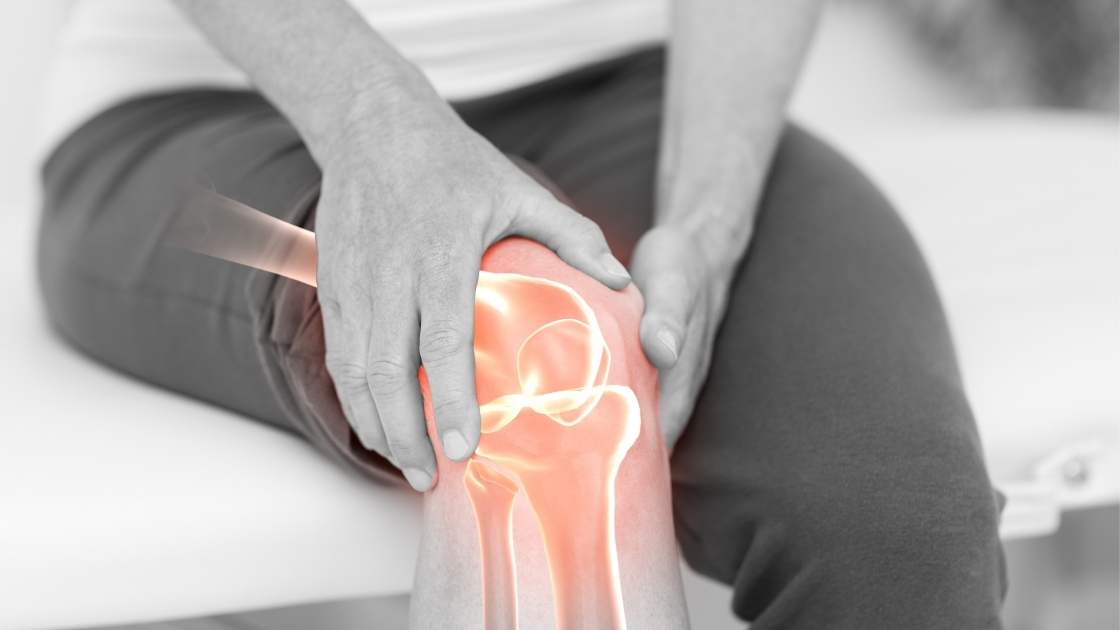Hoffa's syndrome or infrapatellar fat pad syndrome is a condition that affects the fat pad of your knee. It can cause pain and swelling in your knee. If you have Hoffa's syndrome, the pain may come on suddenly after exercising or bending your knee. In some cases, it may be caused by an injury or natural development as you get older. Treatment for Hoffa's syndrome includes resting your leg and using ice packs to reduce swelling as well as medications. Surgery is sometimes required for severe cases of Hoffman's syndrome. Sports medicine, including physiotherapy, is best for this knee pain injury.
Fat pad pain is also known as patellofemoral pain or infrapatellar fat pad impingement. Hoffa's fat pad syndrome occurs when the fat pad of your knee becomes inflamed. The anterior knee pain is usually alleviated by bending the knee. Symptoms may be caused by an injury or by natural development. In some cases, Hoffa’s syndrome can also result from an underlying medical condition, such as rheumatoid arthritis. Inflammation in the knee cap, the knee joint, the patella, the patellar tendon, or the knee extension can be remedied with physical therapy, among other treatment options. The fat pad irritation from the scar tissue can also be the result of overuse injury. Hoffa's disease can be alleviated with massage therapy. MR imaging can reveal the cause of the sharp pain you are experiencing in your shin bone or thigh bone. An orthopaedic surgeon can give you a steroid injection if the pain in the quadriceps muscle is unbearable.
Pain is the most common symptom.
Pain may be felt in the knee, thigh and groin. The pain is often described as aching or throbbing. Your doctor may find that there’s an effusion in the knee joint. This is when there’s too much fluid around the knee, causing it to swell up. If you're suffering from knee pain, the first step to getting relief is figuring out what's causing the problem. The best way to do this is to see a doctor who can diagnose your condition and tell you how to treat it.
One common cause of knee pain is Hoffa's syndrome, an injury that occurs on the front of your knee. It's caused by an injury to the Hoffa fat pad and can be treated with taping and strengthening exercises. If you don't get treated for this condition, it may lead to other problems such as impingement syndrome—an injury that occurs when there's too much pressure on your patellar tendon—or arthritis.
Knee injuries can also be caused by overuse or repetitive strain. If you're experiencing pain at the front or side of your knee, it could have been caused by taping or pinching in those areas during strenuous activity, such as running or playing sports. In this case, it may be necessary for you to undergo surgery if there's no other way for you to recover from these injuries.
The pain is usually alleviated by bending the knee.
In most cases, the pain is alleviated by bending the knee. The pain is usually not reduced by straightening the knee. Pain may be lessened by flexing the hip and knee or extending them in opposite directions (e.g., flexing your right leg while extending your left leg).
Symptoms may be caused by an injury or by natural development.
You might have symptoms caused by an injury or you may be experiencing natural development. The following are some of the causes:
- Injury from a car crash, sports injury, or other trauma to your head, neck, or back.
- Ageing: Age-related changes in the joints decrease their ability to absorb shock and impact. This can result in pain and muscle weakness that can lead to symptoms like those of arthritis.
- Overuse: Repeated motions such as typing on a computer keyboard or playing tennis can cause pain and stiffness as well as other problems with movement.
Causes include arthritis and ageing.
This condition can be caused by obesity, knee osteoarthritis, and ageing. There are several ways to develop Hoffa syndrome. Inflammation of the fat pad in the knee can exist as a standalone condition, but it is more often linked to other knee conditions, such as patella tendinopathy or patellofemoral (kneecap) pain.
One is by being overweight. If you're carrying around too much weight on your body and have poor posture, then this can lead to the development of Hoffa's syndrome. Another cause is arthritis in the joints of the neck or lower back region which may result in overuse of those joints causing them to become stiffened over time. This condition can lead up to the point where the joints lose their function completely due to lack of use or movement. These joints need regular exercise or risk having problems about 20 years down the line.
Treatment can include ice, elevation and medications.
- Ice: Apply an ice pack to the area for 15 to 20 minutes three or four times a day. This will help reduce swelling and pain. If you don’t have access to an ice pack, apply cold compresses (wet washcloths or towels) instead. Do not use heat on the affected area unless directed by your doctor; it may increase swelling.
- Elevation: Resting with your leg elevated above heart level will help reduce swelling and pain as well as improve blood flow through the veins in the groin region. If available, place pillows under your knee while lying down on your back. This method helps keep blood flowing toward your heart instead of pooling in your legs when you sleep at night when gravity pulls blood downward toward the feet and ankles. This causes the feet and ankles to swell overnight due to fluid retention that accumulates during extended periods of sitting upright during work hours.
- Pain relievers: Over-the-counter medications such as ibuprofen (Advil) can provide temporary relief from minor discomfort caused by hematoma-based pain around the perineum/groin area where bruising has occurred. Bleeding inside tissue causes pressure buildup within localised areas, making them tender upon touch. Focus your energy towards healthy living style habits like getting enough sleep every night. Which means going home before 10pm as working overtime increases risk factors associated with developing type 2 diabetes mellitus.
Surgery may be required in some cases.
Surgery may be required to remove the inflamed fat pad, repair the meniscus or torn ligament, remove a bone spur, or a loose body (a piece of cartilage).
How long does Hoffa's syndrome last?
The pain can last from a few days to several weeks, and it can be severe. You may find that the pain is relieved by bending your knee to an angle of about 90 degrees. The symptoms of Hoffa's Syndrome tend to come on suddenly, but they usually don't last more than a few days. If you have recently injured your thigh or hip joint and are experiencing intense pain in these areas, contact your doctor immediately. This may be a sign of a more serious condition such as compartment syndrome or even necrotizing fasciitis (flesh-eating disease).
What does Hoffa's syndrome feel like?
Symptoms of Hoffa's syndrome include pain in the knee, which tends to be worse when standing or walking. In some cases, squatting may make it easier to straighten the affected knee without discomfort.
Hoffa's syndrome exercises
If you are experiencing oedema, it is important to exercise your legs and feet to help reduce swelling. Swelling in the legs can cause pain and restrict movement. Exercises can strengthen the quadriceps, hamstrings and tendons around your knees. This may also improve your balance so that you are less likely to fall over or trip over things in your home environment. Exercising regularly will also help keep your knee joint stable as well as improve overall fitness levels which could mean that recovery from surgery or injury is quicker than expected.
The first exercise is knee flexion for range of motion. This is an easy stretch that helps increase blood flow to the area, which helps ease pain and discomfort. To do this exercise, start by lying on your back with one leg bent and the other straight out. Then slowly bring your bent knee toward your chest until you feel a good stretch in your quadriceps muscle. Hold this position for about 15 seconds before releasing back down to the starting position. Do this 10 times for each leg on each side of your body to complete one set of this exercise.
Hamstring stretch: Lie on your back with one leg straight and the other bent at 90 degrees. Pull your foot towards your buttock until you feel a stretch in the back of your thigh. Do this for 30 seconds on each leg.
Hoffa's syndrome test
If you suspect that you or a loved one has Hoffa's syndrome, there are a few ways to test for it. The most common is the blood test, in which a sample of your blood is sent off to be tested for the presence of cancer or other diseases.
- Importance of diagnosis: A proper diagnosis is important because it will help determine whether you need treatment and what kind of treatment is best for you. This can mean the difference between successful treatment and no treatment at all!
- Symptoms: If left untreated, symptoms may include weight loss, nausea, vomiting and/or decreased appetite. However, these symptoms may also be caused by other conditions, such as liver disease or diabetes. It's important that anyone who suspects Hoffa's syndrome should see their doctor immediately. They can get tested properly before making any rash decisions about their health (such as quitting their job).
Hoffa's syndrome surgery
Hoffa's syndrome surgery is an option for patients with severe pain or who don't respond to other treatments. The procedure may be performed on an outpatient basis and typically lasts about two hours. Hoffa's syndrome surgery involves removing portions of the bone in your knee joint that has been weakened by arthritis. This can reduce stress on nearby nerves. This type of surgery is only recommended for patients who have already tried other treatments but haven't had good results, and it may not provide immediate relief from your symptoms.

